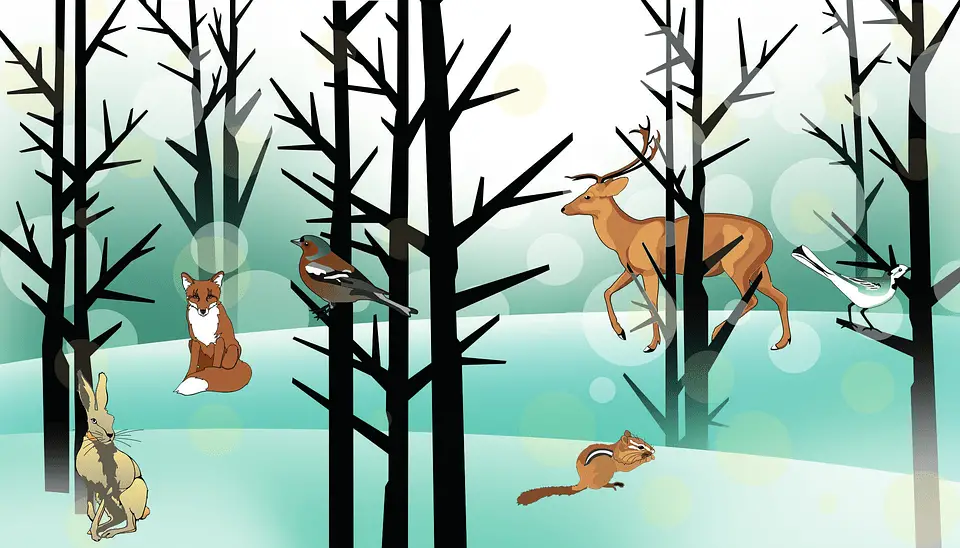Aesop used animals as images to tell his stories in the past. This trend had been followed for a number of years but finally faded. Ted Hughes revived animal imagery. Numerous animal lovers exist even today. D H Lawrence is also considered a good animal lover but Hughes’ illustration is different from his in every sense. He is prominent among them all. In fact, he is one of the most famous poets who love animals. Ted Hughes’ work is remarkable due to the excessive use of animal imagery. He does not only use them for portraying images but also for symbolic purposes.
Ted Hughes uses animal imagery in his poetry for the following purposes:
Every image conveys a unique message to the readers. Ted closely observes animals and depicts a truthful and vivid picture. Every poem reveals his close connection with them. Ted’s biography reveals that he very closely experienced animal nature. It is, therefore, he has the largest collection of animal images. He starts a poem by illustrating a simple image of an animal and then thematically explains his subject through the technique of symbolism. He also uses animals as metaphors in order to make his subject clear. Every poem by Ted Hughes is a skilful interpretation of animal imagery with a combination of symbolism.
“The thought fox” is the simplest example in this regard. Symbolically, the fox represents a thought. The poet describes the creative process of writing a poem. He explains how an idea invades the mind of a poet. For this purpose, he uses an image of a fox. The beautiful presentation of fox imagery is illustrated in the following lines.
“Cold, delicately as the dark snow
A fox’s nose touches twig, leaf;
Two eyes serve a movement, that now
And again now, and now, and now”
In the end, he writes:
“Till, with a sudden sharp hot stink of fox
It enters the dark hole of the head.
The window is starless still; the clock ticks,
The page is printed”.
Apparently, the fox is just an animal but symbolically it is a thought that suddenly comes to the mind of a poet and leaves its footprints in form of words. Ultimately “The page is printed” suggests that the poet has successfully written a poem.
It shows the powerful imagination of the poet in the use of animal images. Moreover, only animal imagery not makes Ted Hughes’ poems magnificent but also their symbolic significance. Symbolic representation of animals makes his poetry marvellous.
A variety of realistic animal imagery glorifies the poetry of Ted Hughes. Every image is true to nature. Moreover, every animal serves a purpose and symbolically refers to something to the readers. To explain; another poem, which is worth mentioning is “That Morning”. In this poem, the poet goes fishing with his son. He sees salmons in the river. Salmon’s realistic imagery has very beautifully been depicted by the poet. At the end of the poem, suddenly bears attack salmons. The poet elucidates the theme of violence.
Likewise, in “The Jaguar”, he writes:
The apes yawn and adore their flees in the sun
The parrots shriek as if they were on fire, or strut
Like cheap tarts to attract the stroller with the nut.
Fatigued with indolence; tiger and lion
Lie still as the sun.
“Full Moon and Little Frieda” also contain two symbolic animal images. One is a dog and the second is a cow. Animals do not serve only the purpose of symbolism but also naturally adores the poem. In order to understand animal imagery in Hughes’s poems, good intelligence is always required because it always symbolically explains something.
The subject of violence, savagery, barbarism and death along with destruction is put in plain words by the poet in his poems through animal imagery. Even vital matters like death, destruction and violence are discussed through animals. It is not wrong to say that two prominent ingredients of Ted Hughes’ poetry are violence and his treatment of animals.
Ted Hughes also ridicules humans through animal imagery. He very closely observes animals and eventually understands their psyche. It helps him to perfectly explain a topic to his readers. If Ted Hughes aims to give a moral lesson then it is through animal imagery. Hawk, thrush, fox, jaguar, crow, cat, mouse, bull, pig etc. are frequently discussed in his poems. His childhood experience with animals supports him to write superb poems about them. They sometimes become characters in his poems wheres sometimes serve the purpose of symbolism. It is a hallmark of Hughes’s poetic genius that he uses Hawk to represent dictatorship. Similarly, the crow sometimes is degraded and sometimes glorified. Animal’s territory is the favourite Ted Hughes to write upon. In short, no poet has observed and used animals in poetry more truthfully and accurately than Ted Hughes.
Related Questions:
- Write a critical note on the use of animal imagery for symbolic purposes in the poetry of The Hughes.
